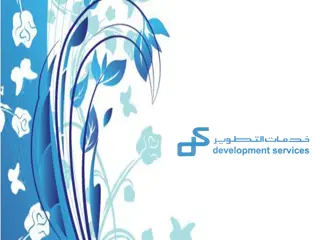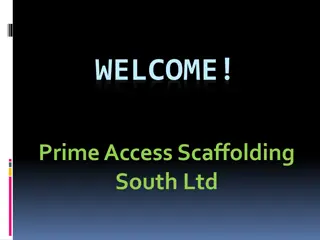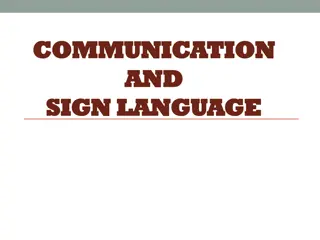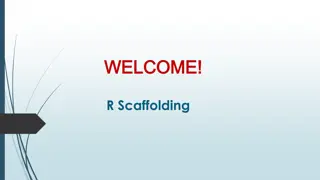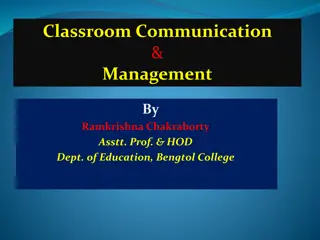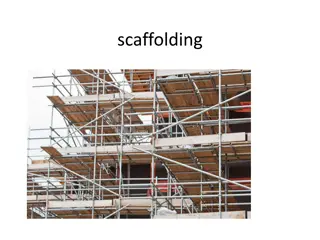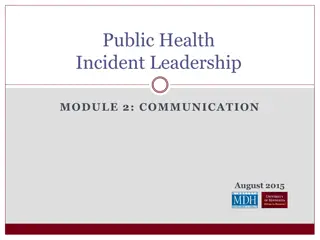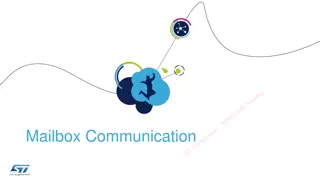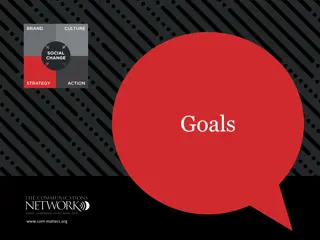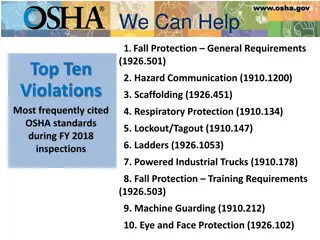Scaffolding communication
Explore scaffolding communication strategies to enhance speech, language, and communication skills in children. Discover ways to support language development through gestures, objects, and pictures, and learn about different scaffolds and supports that aid in understanding, initiating, and recalling information. Identify types of scaffold and support strategies to help your child communicate effectively.
Download Presentation

Please find below an Image/Link to download the presentation.
The content on the website is provided AS IS for your information and personal use only. It may not be sold, licensed, or shared on other websites without obtaining consent from the author.If you encounter any issues during the download, it is possible that the publisher has removed the file from their server.
You are allowed to download the files provided on this website for personal or commercial use, subject to the condition that they are used lawfully. All files are the property of their respective owners.
The content on the website is provided AS IS for your information and personal use only. It may not be sold, licensed, or shared on other websites without obtaining consent from the author.
E N D
Presentation Transcript
Scaffolding communication Speech and Language Therapy CYPIT
Disclaimer The purpose of the session today is to provide you with information on strategies which can be used with your child to support the development of their speech, language and communication skills. By attending this webinar, you are not referring your child to the Speech and Language Therapy service. You are welcome to use the Q&A function to ask questions. Given that this is a TEAMs webinar and is not designed to provide specific clinical intervention, any identifiable information you provide about your child will not be processed or retained. Should you provide information regarding your child, we will not use this unless there is an identified safeguarding concern. My colleague is monitoring messages being sent to us to identify questions which require a response. Messages with identifiable information will not be published. If this is the case, data will be used to escalate appropriately to the safeguarding team
Circles of support/ influence General Practitioner Occupational Therapist Nursery staff f Family Working together: The people who will be able to make the most change are those closest to the child Child Respite Keyworker SEND Team Falvey, M. A., Forest, M., Pearpoint, J., & Rosenberg, R. L. (1997) Speech and Language Therapist Dietitian Physiotherapist
How can we scaffold communication? Scaffolding = supporting a child to understand and use more communication In this workshop, we are building on communication strategies discussed in Foundations and Building Blocks workshops. We will discuss how we can use gestures, objects and pictures to support language development.
Different scaffolds and supports Supporting communication is important for all of us. It helps us to: understand spoken word initiate and communicate clearly process, remember and recall information learn vocabulary
Types of scaffold and support strategies We can use the following to support a child s communication development: Objects Natural gesture/ signing Photos Pictures/ symbols Written words Start by looking at what your child may be using
What is your child doing? Start by observing your child and noticing what they may rely on or use to support their communication naturally.
What is your child doing? Examples include: Reaching to be picked up Recognising a favourite snack packet Bringing a bottle to request a drink Waving or tapping to get your attention Copying you putting your shoes on You may observe that your child is using lots of scaffolds and supports!
Objects Objects can be used to aid a child s understanding or to communicate what they want How to get started Offer your child a choice of objects whilst naming them e.g. ball or spoon? Show your child the object that relates to that activity e.g. keys when it s time to go outside
Objects How to get started Try to be consistent with objects you use Give your child time to learn what the object means Examples include: Shoes when it s time to go outside A soft play ball to represent going there A bowl for breakfast time
Gesture Gesture or signing are used alongside talking. It helps children to understand and communicate with others.
Gesture How to get started Model natural gestures like shaking your head to protest no or agree yes Use gesture or sign for key words (the most important) words in the sentence Children need exposure to consistent gestures and signs used by adults around them The aim is not to force children to copy gestures or signs, however they may begin to do this in their own time
Gesture Makaton Let s try some signing! More Look Finished
Pictures and symbols Pictures and symbols can support a child s understanding and their expectations of what is happening. They may also be used to help children communicate.
Pictures and symbols How to get started Identify times when it may help to have a picture or symbol of what is happening Start by introducing one or two pictures or symbols at key times, e.g. picture of Granny when going to her house Offer your child a choice of pictures Try to be consistent with pictures/symbols you use Give your child time to learn what the picture/symbols means, don t expect them to use them straight away
Pictures and symbols Everyday use It is likely, you are already using some verbal prompts to help with daily routine e.g. telling them about what will happen next after they finish their dinner. If your child is in nursery, you may have already come across some of the following scaffolds: Now/Next boards Visual timetables Countdown strips/working towards boards
Pictures and symbols Everyday use
To recap: 1. Objects 2. Natural Gesture/ Signing 3. Photos 4. Pictures/ Symbols 5. Written words Remember to start by looking at what your child may already be using
Top tips with all scaffolds Regardless of the strategy you are using, the same advice applies: Model language Individualise Be consistent Be patient: don t expect your child to use objects/gestures/pictures or symbols straight away If you have not attended Foundations or Building Blocks yet, you will find more information here
Scaffolding is everyones job The average 18-month-old has been exposed to 4,380 hours of oral language at a rate of 8 hours/day from birth. A child who has a communication system (AAC) and uses it for 20-30 minutes twice per week will reach the same amount of language exposure (in their AAC language) in 84 years.
Thank you for listening Further help can be found via our website: cypf.berkshirehealthcare.nhs.uk/communication


